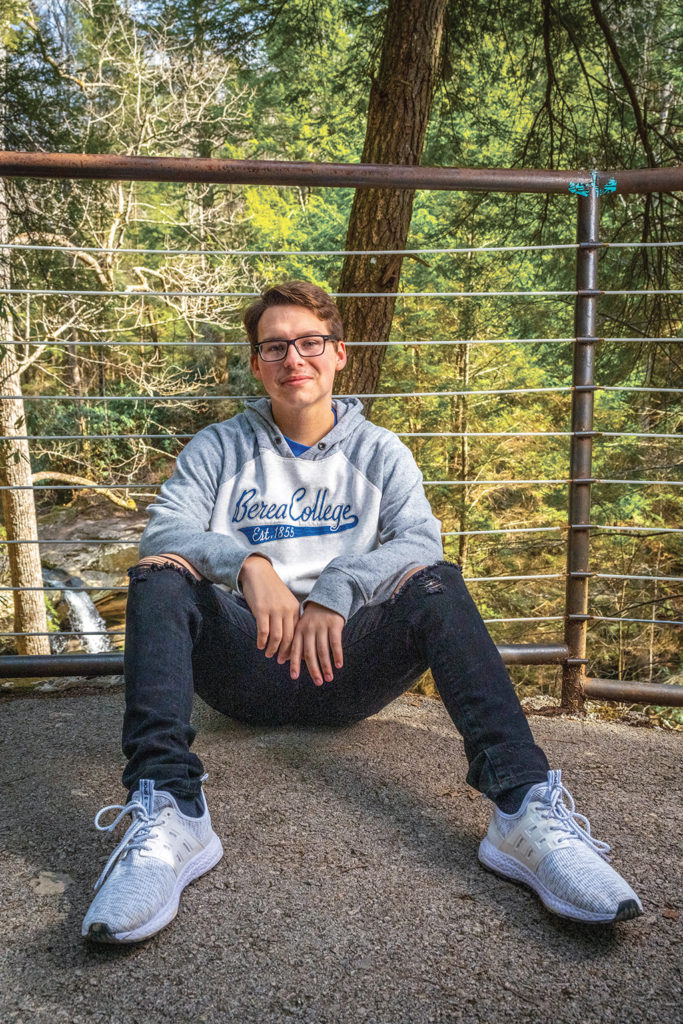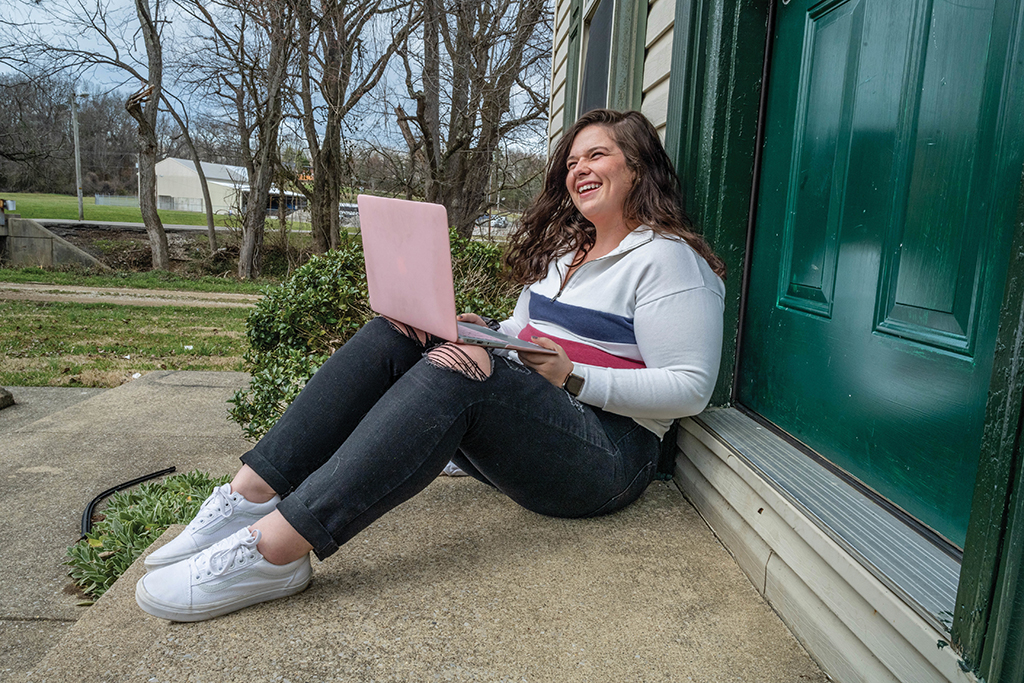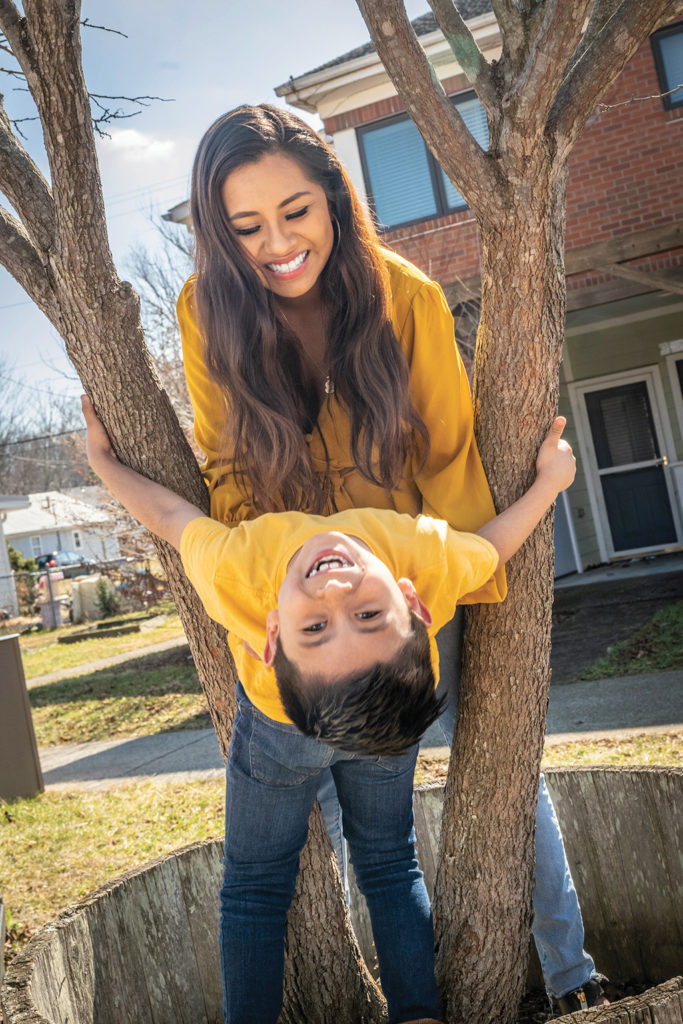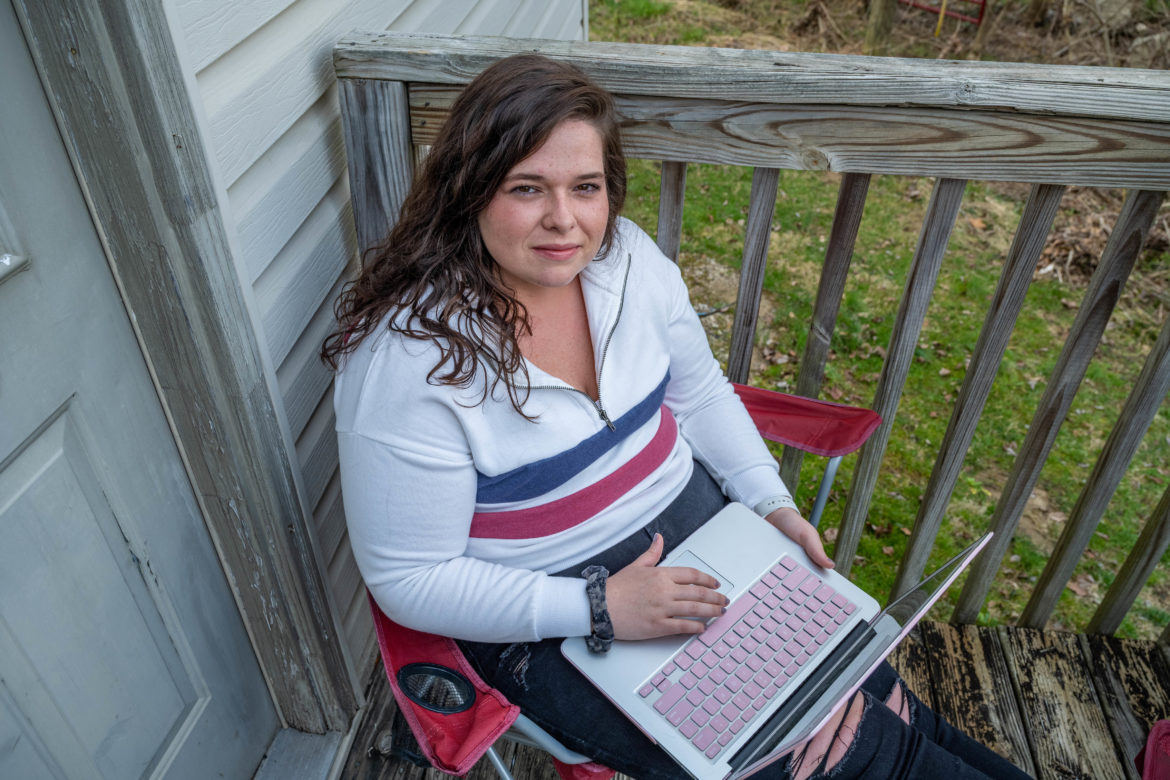Student perspectives on navigating the pandemic
The pandemic upended everyone’s lives, and though some predicted it would take a large toll on the world, few were fully prepared for the fallout that was to come. Healthcare and other frontline workers labored tirelessly to provide essential care. Many educators were left in the lurch, trying to figure out how to
teach online—some for the first time ever. People lost their jobs as businesses around the world shuttered. And, worldwide more than 3 million people have lost their lives.

Students were not immune to the effects of the pandemic. One by one at first, and then seemingly all at once, colleges and universities around the country sent students home in the spring of 2020. Being among the first, Berea College garnered some negative press at the outset, but once the news broke of death tolls rising and outbreaks on other college campuses, many quickly pulled back on their disagreement with the College’s decision.
Nicholas ’24, a Jackson County, Ky., native, was a high school senior when the pandemic hit. Immediately after Berea’s campus shut down, he was concerned about whether students living in rural areas like his would be able to complete their online coursework from home. However, when he learned the College was providing students in need with Wi-Fi hotspots, he saw that Berea cared about its students’ success. He recalls that instance helping make his decision to attend Berea even easier.
“They really do care for their student population,” he said. “So that really kind of helped me decide and say, ‘Yeah, this is most definitely for me.’”
Senior Shá remembers the day Berea College announced it would be sending students home for the rest of the semester. “It was crazy,” she said, “because when I went outside, you just saw everybody on their phone calling their parents saying, ‘Mom, you have to come get me now.’ I could definitely see the panic on people’s faces.”
In Spring 2020, most students had no choice but to leave campus. As an impromptu Class of 2020 graduation photo was taken on the steps of Union Church, students said goodbye to one another and made plans to return home. Berea continued to house and feed those students for whom returning home was not an option.
After an uncertain summer, new guidelines from the Centers for Disease Control and Prevention meant Berea was able to reopen to in-person classes for the Fall 2020 semester. Students were left with the difficult decision to return to campus or continue with distance learning.
“I think truly the hard challenge in deciding to come to campus is knowing yourself and if you are willing to abide by the COVID guidelines that have been established,” said Michelle Johnson, Student Life program coordinator. “Students don’t have their same freedoms, like driving in their vehicles or leaving town for anything. They can’t eat in restaurants. They have to walk to Walmart to pick up items they need. Deciding to abide by these rules has been a challenge for some.”
Collis Robinson ’13, associate dean of Student Life, says approximately 60 percent of students were on campus and 40 percent were remote in Spring 2021. This is all new for Berea, a college whose live-learn-work model is predicated on students being on campus.
Although I do miss hanging out with my friends, this is probably the most time I’ve spent with [family] in about three years since I’ve been out of high school. So, I do enjoy that aspect of it. I have been getting closer with my family.
Shá ’21
Family concerns were a determining factor for many students when deciding whether to return to campus. As a first-year student, Nicholas was required to come to campus his first semester, but he chose to go back home for the spring semester to avoid being stuck on campus if his family needed him.

“I needed to be able to make sure if I needed to come home that I can,” he said. “I knew that if I did go to Berea for this semester that I could [go home], but it would be harder. I didn’t want to fill out paperwork if I have to attend a funeral or something that I couldn’t control. I wanted the freedom to be able to go home if something did happen.”
For her part, Shá says the pandemic has been a blessing because she has been able to spend time with family she otherwise wouldn’t have seen. “Although I do miss hanging out with my friends,” she said, “this is probably the most time I’ve spent with [family] in about three years since I’ve been out of high school. So, I do enjoy that aspect of it. I have been getting closer with my family.”
While Nicholas and Shá have appreciated the extra time with family, there are others for whom living with family posed more problems than solutions.
“There’s just not enough space at home for me and my full-grown adult self and all that comes with that,” Jordan ’22 said. “Two weeks in I was like, ‘Oh, this is real. This is not going away. I need to find a long-term solution and at home is not it.’”
So she and two other friends moved back to Berea and rented an off-campus apartment. Although it is difficult, Jordan believes most students’ frustrations arise through no fault of the College. “I think a lot of students recognize that the College is trying [its] best, but they just want answers faster,” she said. “And that’s not the College’s fault. That’s the pandemic’s fault.”
Jordan, however, feels more grateful than frustrated, especially because of the CARES Act money the College received and has passed down to students when applicable. “I can’t complain too much because without refund money and CARES Act money I would have had to move back to my parents. And all that help is because of Berea.”

Senior non-traditional student Gabby is raising her son in addition to managing a course load and her student work position. “When I realized it was really serious, and that we weren’t going to come back anytime soon, I actually went home because it got really scary. It was nothing I experienced before.”
She returned to her hometown of Louisville, Ky., but quickly realized it was not a permanent solution. “When I went to Louisville, I wasn’t comfortable there because it was me and my son, my mom and three siblings at home. I still have work to do, and it was just very distracting.”
After returning to Berea, a case of COVID shut down the Child Development Lab, her son’s on-campus care and early education facility, leaving Gabby with more on her hands than she thought she could manage. But her professors provided her with the flexibility she needed.
“I do feel like my professors were understanding of my situation, and they knew that if I had to miss class, it wasn’t that I didn’t want to be there. It’s because I didn’t have childcare because of COVID.”
While stories of outbreaks on other college campuses flooded the news in 2020, Berea College remained relatively unscathed, due in large part to the stringent restrictions placed on students. And though there were some naysayers at first, Johnson noted students’ overall attitudes have become more grateful as the effects of the pandemic wear on.
“I remember many students feeling the rules were too strict in the fall; however, the attitude has shifted to one of appreciation for the spring,” Johnson said. “I’ve heard students express how much safer they feel from the virus here on campus than they do at home due to stronger exposure risks or less guideline-following at home.”
The College continues random student testing, with the goal of testing 50 students per week, according to Johnson, and if students become ill there are enough resources to act quickly and appropriately.
“If students fall sick for any reason,” Johnson says, “we’ve been able to provide supplies for quarantining, like bedding, toiletries, snacks and so forth.”
However, the strict safety guidelines and social distancing does not come without costs. “One of the biggest challenges I think everyone is facing is pandemic fatigue,” Johnson said. “Going on a full year of the pandemic, many people are ready to get back to ‘normal.’”
It is uncertain when life will be back to normal, but there are signs of hope. The availability of vaccines gives a chance to beat the virus and see more students return to campus this fall. Two things are for certain, however: Berea College will continue to seek out ways to help its students during these trying times, and those students will continue to persevere just as they always have through this and other difficulties.


